A memorable undertaking for a memorable wedding. One could summarize thus, in seven words, the Fasti di Elisabetta Farnese cycle, the series of paintings that was commissioned from Ilario Mercanti known as the Spolverini (Parma, 1657 - 1734) on the occasion of the wedding between Elisabetta Farnese (Parma, 1692 - Aranjuez, 1766), princess of Parma and Piacenza, and King Philip V of Spain (Versailles, 1683 - 1746), celebrated on Sept. 16, 1714, as a result of the shrewd diplomatic maneuvers of the Farnese family and Cardinal Giulio Alberoni, the latter an adviser to the king, capable ofexerting his decisive influence on the Spanish court to persuade the Bourbons to arrange the marriage between the sovereign, widowed by his first wife Maria Luisa of Savoy (Turin, 1688 - Madrid, 1714), and the young princess of the Farnese house, a sprightly 22-year-old, cultured, intelligent, trained also in the arts. On the occasion of the exhibition I Fasti di Elisabetta Farnese. Portrait of a Queen (in Piacenza at the Civic Museums of Palazzo Farnese, from December 2, 2023 to April 7, 2024), almost all the paintings that are part of the cycle have been brought together in a single location, for the first time since their migration to Naples, that is, the city to which Charles of Bourbon, son of Elisabeth and Philip, had the Fasti and a substantial part of the Farnese collection moved. And of course their history has been reconstructed in a timely manner.
The Farnese, a family that anciently came from the small rural nobility of northern Latium, have always acted steadfastly and strenuously to enhance the image of their lineage, even in periods of crisis such as the one they were experiencing in the early eighteenth century, despite their attempt to revive it by royal marriage. And the Fasti di Elisabetta were not, therefore, the first such undertaking: Farnese history is studded with cycles of paintings or frescoes in which the dynasty pursued the path of self-celebration. Famous in this regard are the frescoes decorating the apartments of Pope Paul III (born Alessandro Farnese) in Castel Sant’Angelo in Rome, or the decorative cycle in the Palazzo della Cancelleria in Rome (the famous “Hundred Days Room” by Giorgio Vasari celebrating the events in the life of Paul III himself, painted on the commission of his namesake nephew Alessandro), or the famous “Room of the Fasti Farnesiani” in the Palazzo Farnese in Caprarola with frescoes executed by Taddeo Zuccari between 1561 and 1563. Such an ongoing policy of celebrating dynastic fortunes finds few other parallels in Italy, and the Fasti commissioned to commemorate royal weddings did not escape this logic: the Farnese family had arranged marriages to many of the Italian lords of the sixteenth and seventeenth centuries (from the Este to the Gonzaga, Della Rovere to Borromeo), but Elisabetta was the first woman of the household to marry a powerful foreign king.
By the term “Fasti,” explains the director of the Civic Museums of Palazzo Farnese, as well as art historian and expert on Farnese art Antonio Iommelli, should be understood all those paintings that “describe and celebrate personal events and military political facts” as well as “those commissions that, like a battle or a marriage procession, reveal strong encomiastic contents.” And the commissioner of Elizabeth’s Fasti was the future queen’s adoptive father, namely Duke Francesco Farnese (Parma, 1678 - 1727), the second son of Ranuccio II and Maria d’Este, who ascended the throne of Parma and Piacenza in 1694, when he was only 16 years old: after the death of his older brother Odoardo II, pretender to the throne, husband of Dorotea Sophia of Neuburg and father of Elisabetta, Francesco had become the heir to the lineage, and had taken his sister-in-law, almost ten years his senior, as his wife. On the occasion of Elisabeth’s wedding, Francis had commissioned Ilario Spolverini to take live notes and sketches during the wedding (which was celebrated by proxy, that is, the groom was absent and was replaced by his “representative”, in this case Cardinal Francesco Acquaviva d’Aragona, apostolic nuncio to Spain) and then translate them into a dozen canvases (twelve, in particular, those assembled for the Piacenza exhibition) that were to narrate the event in all its details. From the canvases were then to be taken engravings that would help disseminate the content of the encomiastic cycle, along with a publication, the Ragguaglio delle nozze delle maestà of Filippo Quinto and Elisabetta Farnese, an extremely detailed and illustrated account with five intaglio plates (it was Spolverini himself who provided the drawings for the plates, which were engraved by the Roman Giovanni Battista Sintes, the Dutchman Theodor Verkruys and the Bolognese Francesco Domenico Maria Francia), written by Abbot Giuseppe Maggiali and given to the presses in 1717. Ilario Spolverini had already been employed by the Farnese: the beginning of his work for the family was most likely around 1687-1688, and from then on he worked repeatedly for the court of Parma and Piacenza. He had painted altarpieces, paintings of sacred subjects, allegories, and frescoes: however, the Fasti represented a first for the Parma painter.
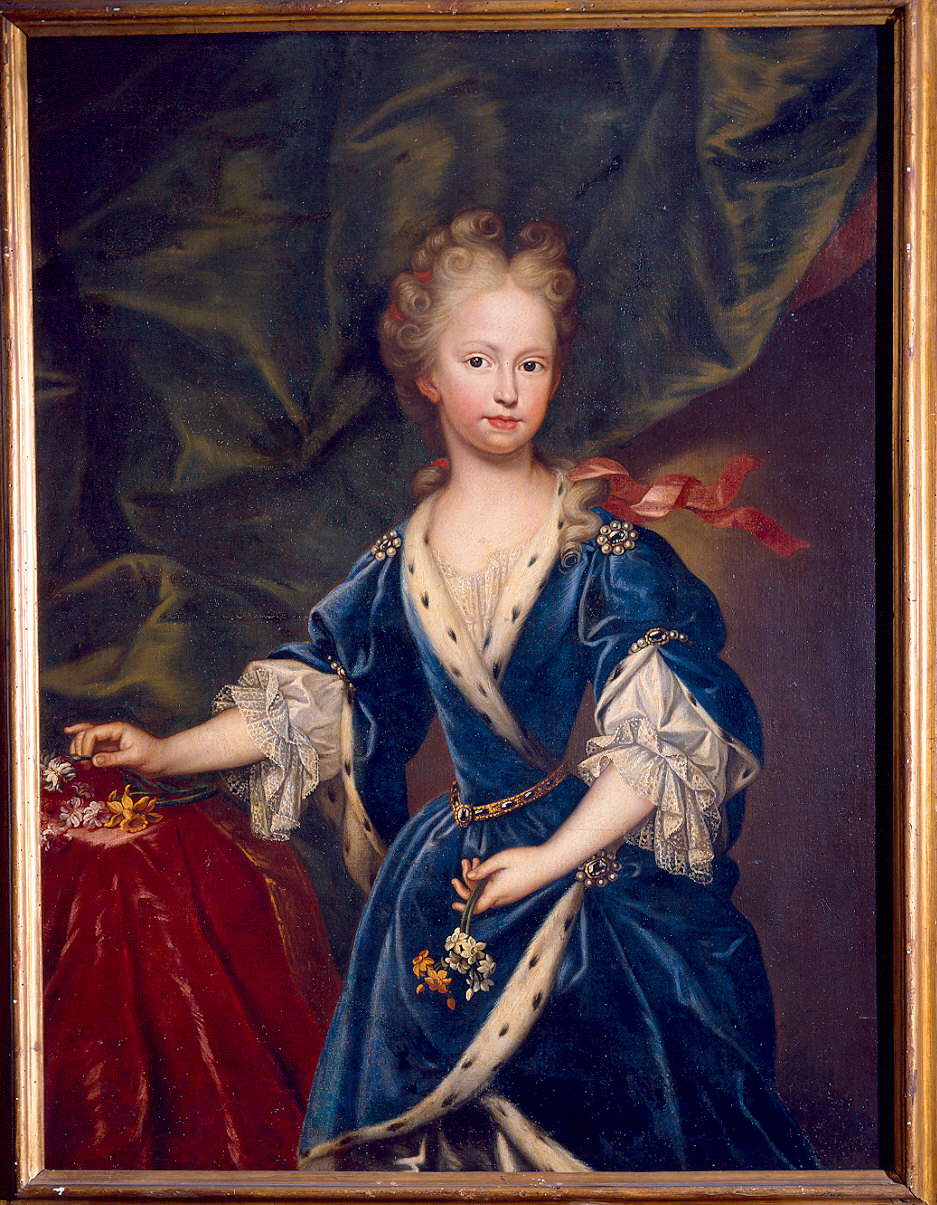

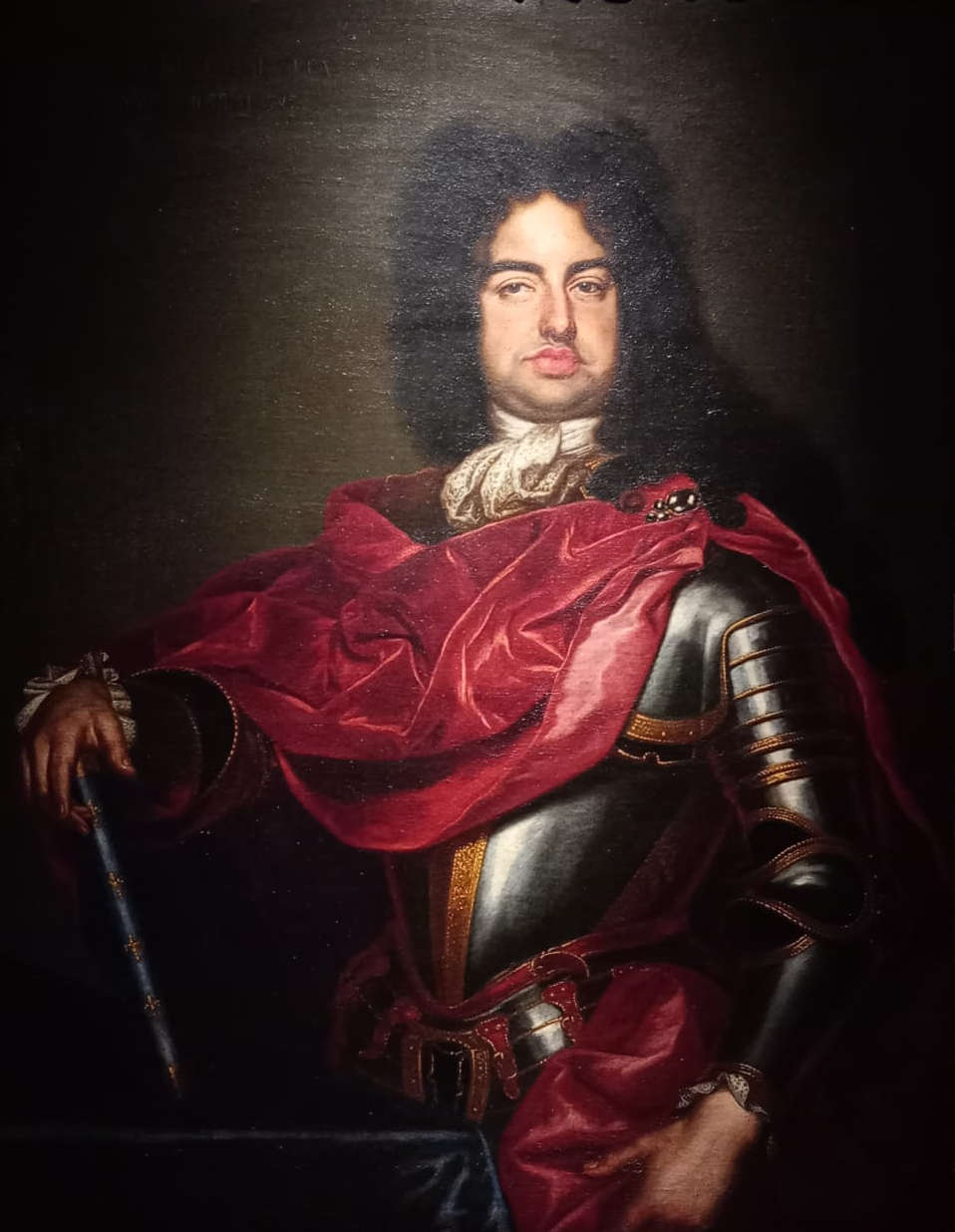



Spolverini coordinated his own work with Maggiali’s so that a coherent narrative would emerge, bearing witness to the prestige and power of the court of Parma and Piacenza: the engravings would echo the Farnese name throughout Europe, while Spolverini’s paintings were designed for the seats of Farnese power. In fact, Francesco commissioned Spolverini to paint a double series of the Fasti di Elisabetta, one for the Palace of Piacenza and one for the Reggia di Colorno (the latter, according to scholar Marinella Pigozzi, probably intended for the apartment of Duchess Dorotea Sofia). It took the painter five years of work, from 1714 to 1719, to complete the undertaking, while two additional years were needed to finish the second series, and today observing the cycle of canvases is tantamount to following a sort of direct ante litteram of the luxurious royal wedding of the early 18th century: reading the sequence based on the chronological order of events, it begins with theMeeting between Duke Francesco, Cardinals Gozzadini and Acquaviva, and Prince Antonio, held on September 15, the evening before the event. It is attended by the bride’s adoptive father and his younger brother, the groom’s representative, and Cardinal Giuseppe Ulisse Gozzadini, legate of Romagna and bishop of Imola, who is in charge of celebrating the wedding. It continues with the Court Visit: Elisabeth, Duke Francesco and the young woman’s uncle, namely Prince Antonio, are welcoming a guest (perhaps Count Francesco Albergotti, legate of the King of France, sent to the wedding as his representative), the character in the red cloak. The next scene is the largest of those remaining in the cycle: theEntrance into Parma from Porta San Michele of Cardinal Giuseppe Ulisse Gozzadini flanked by Cardinal Acquaviva and Duke Francesco Farnese. This is the moment, prior to the wedding, when, through a triumphal procession, the representative of the groom, namely Cardinal Acquaviva, and the officiant, Cardinal Gozzadini, make their entrance into Parma, accompanied by Duke Francesco. It is one of the most impressive works of the entire group, and is set in Parma in front of the Palazzo del Giudice Criminale: "the exhibition layout, hinging on the detailed description of the Ragguaglio,“ Pigozzi writes, ”denounces a realistic intent to keep faith with the precise narrative of the historical event, to which the painter combines a remarkable knowledge of perspective, an interesting truth of the architectural variety of the city, in the individuated physiognomies of the protagonists, some of them charged. The only difference from Abbot Maggiali’s Ragguaglio is the time in which the procession takes place: according to the book it was held at night, while in Spolverini’s painting the scene is set during the day.
This is followed by paintings of Cardinal Gozzadini’s Visit to Elisabetta Farnese and theHomage of the bishop and clergy of Parma to Elisabetta at the door of the cathedral, as well as the two scenes, not brought together for this exhibition, with the Wedding Procession of Elisabetta Farnese and the Wedding kept in the collections of the City of Parma. It continues with the festivities that follow the ceremony: this is the episode of the Wedding Banquet in honor of Elisabetta Farnese in the Ducal Palace of Parma, with the King of Spain, who, absent, is represented by a large portrait of him hanging on a wall, towering over all the participants in the feast. Elisabetta Farnese is seated at one side of the table, on the left, the portrait looming above her: at her side we distinguish her mother Dorotea while all around her are arranged the ladies and nobles of the court, and in the foreground here instead are the valets, dressed in red, all individually characterized (so we are probably facing the real valets of the Parma court), caught bringing the food to the tables. In the next canvas we witness Elisabetta Farnese and her mother Dorotea Sofia meeting Cardinals Gozzadini and Acquaviva accompanied by a number of gentlemen: this is one of several meetings that took place after the wedding had taken place. Subsequent moments are also those of the Kissing of Queen Elizabeth by the ladies and gentlemen of the court and the Kissing of Queen Elizabeth by representatives of the communities of Parma and Piacenza: the court and the cities ruled by Elizabeth’s family pay homage to the new queen consort of Spain. The Fasti concludes with Elisabeth’s journey to Spain: the first scene depicts The Arrival in Borgotaro of Elisabeth Farnese’s procession and captures the moment when, on the night of September 23, 2023, the queen and her procession arrive in the Apennine town of Borgotaro where they will spend the night waiting to resume their journey to Liguria, from where the journey will then continue to Madrid. “We see the procession,” Pigozzi writes, “winding along the hairpin bends in a light that is not nocturnal, but vespertine. Spolverini chooses it to better show us, in a space perspectively dilated as the sinuous procession advances, also the mountainous and hilly landscape, the somber green woods, a nature partly tamed, partly still wild, the Taro river, the bridge, and in the background the gray-blue houses of the village of Borgotaro dominated by the fortress, while numerous clouds animate the sky.” A court now reduced to a minimum is the one accompanying the queen to Mount Cento Croci, or the border between the Duchy of Parma and Piacenza and the Republic of Genoa. Here, Elizabeth took her leave of Duke Francis (her mother had already been greeted in Borgotaro), to continue her journey to Sestri Levante, from where she would then embark for Spain: in fact, since the sea conditions meant that it would be an uncomfortable navigation, the route would continue by land. Leaving the native lands, accompanying the queen remained Marquis Annibale Scotti (Parma’s ambassador to Spain), Princess Ippolita Ludovisi Boncompagni (princess of Piombino and Elisabeth’s senior maid), Princess Pio, Countess of Somaglia, some nobles of the court, sixty halberdiers and a company of Corsicans. Elisabeth would arrive in Guadalajara, Spain, on December 25, 1714: here she would get to meet Philip V for the first time. Then there is one last painting in the series, executed some time after the marriage: this is the canvas depicting Philip V and Queen Elizabeth watching the infant Charles in the arms of Faith. The couple’s son was born on January 20, 1716, so the conception of the work followed the commission of the cycle by at least a year and a half.




![Ilario Mercanti known as lo Spolverini, Cardinal Gozzadini pays a visit to Elisabetta Farnese (1715-1717; oil on canvas, 80 × 170 cm; Reggia di Caserta, inv. no. 572 [1874]; no. 853 [1905]; no. 2161 [1951-1952]; no. 993 [1977-1978]; Farnese Collection, Farnese Fasti Series, wedding of Elisabetta Farnese and Philip V) Ilario Mercanti known as lo Spolverini, Cardinal Gozzadini pays a visit to Elisabetta Farnese (1715-1717; oil on canvas, 80 × 170 cm; Reggia di Caserta, inv. no. 572 [1874]; no. 853 [1905]; no. 2161 [1951-1952]; no. 993 [1977-1978]; Farnese Collection, Farnese Fasti Series, wedding of Elisabetta Farnese and Philip V)](https://cdn.finestresullarte.info/rivista/immagini/2024/2593/ilario-spolverini-il-cardinale-gozzadini-rende-omaggio-a-elisabetta-farnese.jpg)
![Ilario Mercanti known as lo Spolverini, The Bishop and Clergy of Parma Pay Homage to Elisabeth at the Cathedral Gate (1715-1717; oil on canvas 80 × 170 cm; Reggia di Caserta, inv. no. 572 [1874]; no. 578 [1905]; no. 854 [1951-1952]; no. 1001 [1977-1978]; Farnese Collection, Farnese Fasti Series, wedding of Elisabeth Farnese and Philip V) Ilario Mercanti known as lo Spolverini, The Bishop and Clergy of Parma Pay Homage to Elisabeth at the Cathedral Gate (1715-1717; oil on canvas 80 × 170 cm; Reggia di Caserta, inv. no. 572 [1874]; no. 578 [1905]; no. 854 [1951-1952]; no. 1001 [1977-1978]; Farnese Collection, Farnese Fasti Series, wedding of Elisabeth Farnese and Philip V)](https://cdn.finestresullarte.info/rivista/immagini/2024/2593/ilario-spolverini-vescovo-e-clero-omaggiano-elisabetta-farnese.jpg)




![Ilario Mercanti known as lo Spolverini, Kissing of Queen Elizabeth by the Ladies and Gentlemen of the Court (1717-1718; oil on canvas, 95 × 165 cm; Reggia di Caserta, inv. no. 569 [1874]; no. 579 [1905]; no. 853 [1951-1952]; no. 1000 [1977-1978]; Farnese Collection, Farnese Fasti Series, wedding of Elizabeth Farnese and Philip V) Ilario Mercanti known as lo Spolverini, Kissing of Queen Elizabeth by the Ladies and Gentlemen of the Court (1717-1718; oil on canvas, 95 × 165 cm; Reggia di Caserta, inv. no. 569 [1874]; no. 579 [1905]; no. 853 [1951-1952]; no. 1000 [1977-1978]; Farnese Collection, Farnese Fasti Series, wedding of Elizabeth Farnese and Philip V)](https://cdn.finestresullarte.info/rivista/immagini/2024/2593/ilario-spolverini-baciamano-della-regina.jpg)
![Ilario Mercanti known as lo Spolverini, Kissing of Queen Elizabeth by Representatives of the Communities of Parma and Piacenza (1717-1718; oil on canvas 95 × 165 cm; Reggia di Caserta, inv. no. 561 [1874]; no. 580 [1905]; no. 844 [1951-1952]; no. 1014 [1977-1978]; Farnese Collection, Farnese Fasti Series, wedding of Elizabeth Farnese and Philip V) Ilario Mercanti known as lo Spolverini, Kissing of Queen Elizabeth by Representatives of the Communities of Parma and Piacenza (1717-1718; oil on canvas 95 × 165 cm; Reggia di Caserta, inv. no. 561 [1874]; no. 580 [1905]; no. 844 [1951-1952]; no. 1014 [1977-1978]; Farnese Collection, Farnese Fasti Series, wedding of Elizabeth Farnese and Philip V)](https://cdn.finestresullarte.info/rivista/immagini/2024/2593/ilario-spolverini-baciamano-rappresentanti-comunita.jpg)
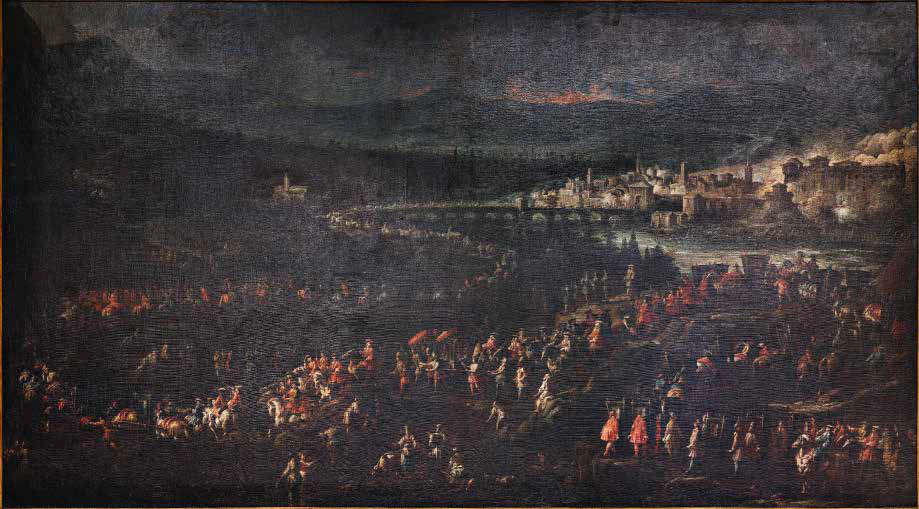
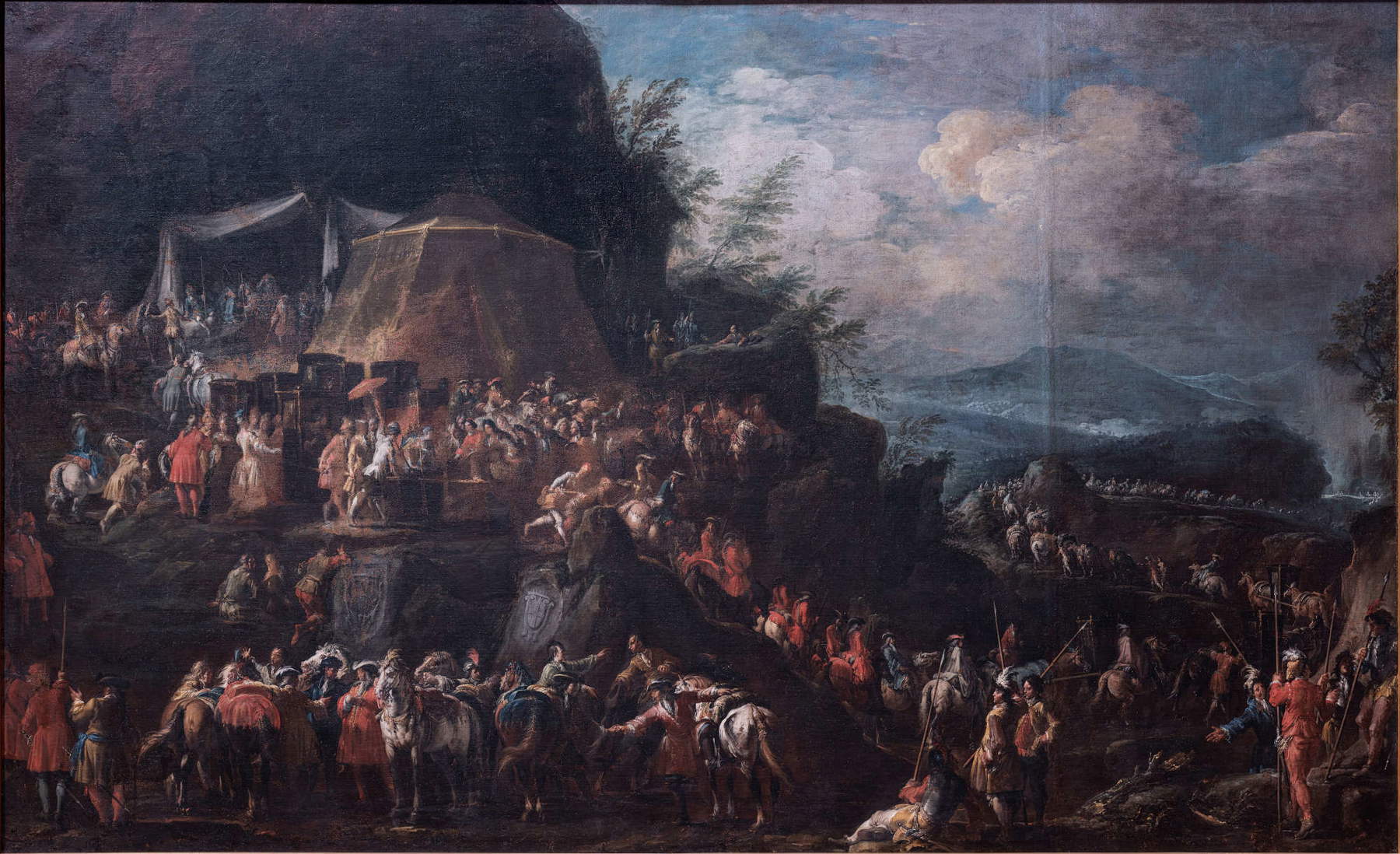

There are perhaps two most striking features of Elisabetta Farnese’s Fasti. The first is theimmediacy of the narrative: Ilario Spolverini, with his canvases, has created a sort of minute-by-minute chronicle of the event, with a painting that is spontaneous, concise, cursive, and compendious, but not for that reason greedy for detail. This can be seen in all the scenes, even in the more ’institutional’ ones, so to speak, such as that of the Court Visit, which repeats a pattern typical of the cycle’s smaller canvases: a dark background to bring out the protagonists in the foreground, painted with thick brushstrokes and flicks of color and light to bring out certain elements (fabrics, armor, complexions). And it is possible to notice this attention to detail by looking especially at the larger scenes, starting with the one depicting the entry of the authorities into Parma. The palaces of the Parma of the time are painted with surprising accuracy, every single participant in the parade is depicted with peculiar care forclothing (this is a reflection of the detailed descriptions of costumes and accessories that theabbot Maggiali had provided in his Ragguaglio), the scene is rendered with a shrewdly studied perspective depth, with the dual aim of creating a backdrop for the procession and making the viewer feel like a participant, given also the size of the canvas. Spolverini also tries to involve the relative with certain minutiae such as the carpets hanging from the balconies or the presence of animals, such as the dog in the procession scene or the cow grazing indifferently in the episode of the queen’s arrival in Borgotaro.
The second characteristic is the triumphalist tone of the whole. It is, after all, a work that celebrates the power of the Farnese family, and is therefore imbued with political value: the cities, the halls, the gardens, even the mountains become a huge, continuous stage on which the court stages the theater of its power. A theater, to be sure, refined and dynamic: the merit of the intelligence of an artist whom the Farnese family grasped at the height of his maturity, a painter capable of animating a substantially illustrative series with detailed descriptions, characters posed in believable poses despite the small size of the figures and despite the crowding of certain scenes, and then again convincing perspective views, skillful and engaging effects of light and shadow, rich and enveloping chromatics. A great machine orchestrated by Spolverini in function of Farnese propaganda, especially since, in this case, the court did not ask its artist to celebrate events of the past: it was current events that the painter, a fine observer but also a “skillful courtier,” as Pigozzi defines him, showed on his canvases, representing “with winking awareness of pomp and ceremony”, and yet “wittily combining etiquette with courtesy, elegance with grace” and inviting viewers “to participate in the realism of perception, to experience it with him.”





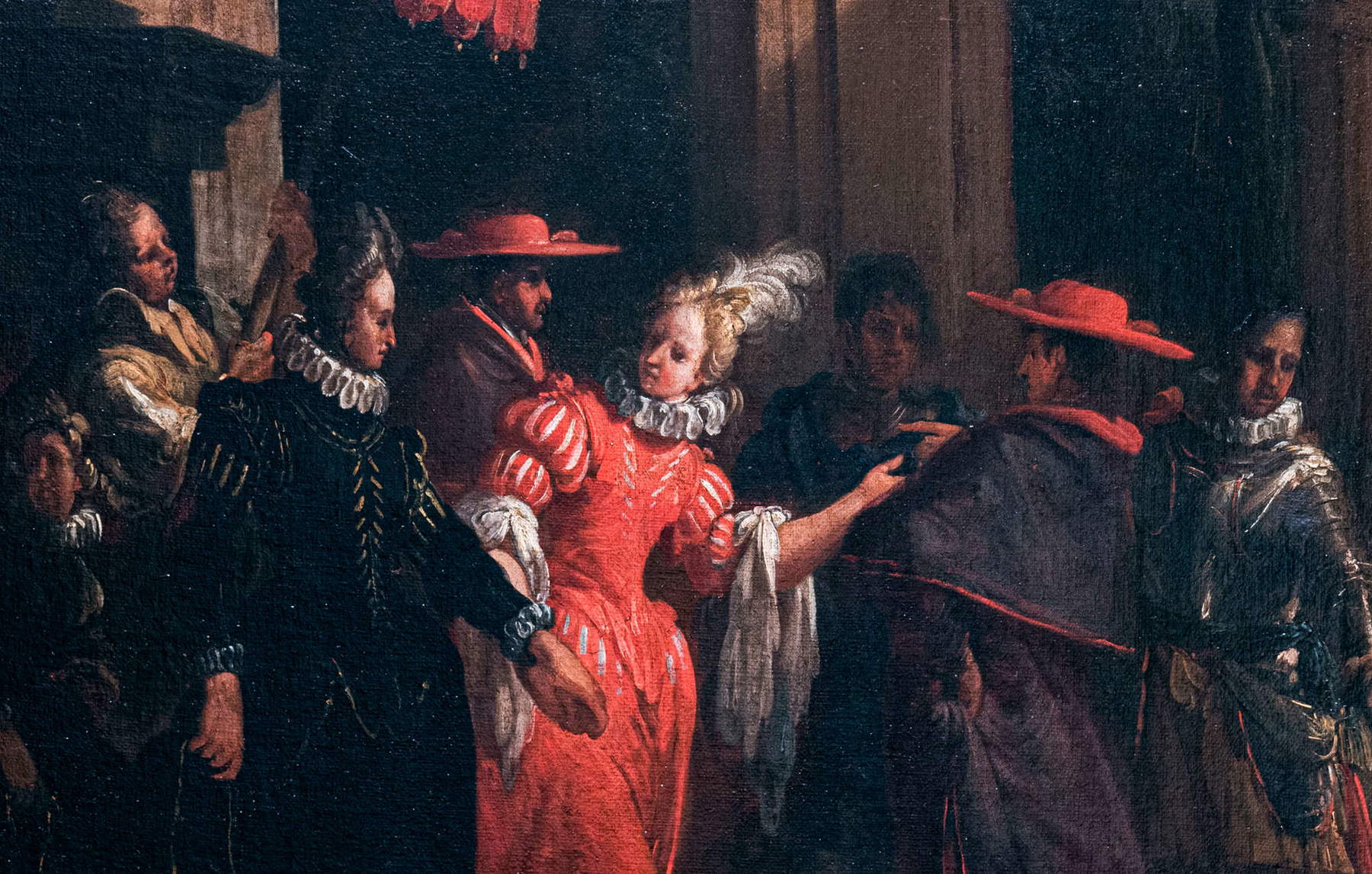


They were, however, the last gasps of a dynasty that would soon be swept away by history. The Duchy of Parma and Piacenza would remain with the Farnese family for only another seventeen years after Elisabeth’s marriage: Francesco Farnese died in 1727 without descendants, and the duchy passed to his younger brother Antonio, who passed away just four years later, in 1731, also without children. The duchy thus passed to the Bourbons, precisely by virtue of Elisabeth’s marriage: the closest heir, in the absence of a cadet branch, was precisely that Charles of Bourbon, the couple’s son, whom Ilario Spolverini (who, by the way, would continue to work for the new ruler) had painted in the arms of the Faith in the last painting of the Fasti di Elisabetta Farnese. Almost an ironic premonition, one might think. In reality, the Farnese, like all Italian lineages, were living through a period of irreversible crisis for almost all Italian states at the time, forced to submit to the imperialism of the Habsburgs who, towards the end of the eighteenth century, had never stopped trying to establish their influence over the political life of the northern Italian states. In this context, argues historian Andrea Merlotti, “the position of the Duchy of Parma was one of enforced immobility and, at the same time, of more or less tacit resignation to submit to the law of the strongest (as emerged on the various occasions when imperial troops stopped in the Duchy at the expense of the slender Farnese coffers).” And the sumptuous cultural policies of the Farnese appear “more a tacit admission of crisis than a different expression of glory”: the Farnese of Francesco, but also those of his father Ranuccio II, were no longer the family that had dominated the fortunes of Rome in the mid-sixteenth century. That of the Fasti was therefore the celebration of a power that, on the international chessboard, was now marginal. With the possibility of exercising an international political role gone, the Farnese’s attention had focused on the territory of the duchy, as well as on the history of the family. And before long, Parma and Piacenza would become Bourbon.
What became of Ilario Spolverini’s cycle after the end of the Farnese family? Charles of Bourbon, a few years after Parma and Piacenza ascended the throne, ordered the transfer of most of the Farnese collections from the Emilian cities to the Royal Palace in Naples. This was between 1734 and 1736: the very young ruler had become king of Naples, with the name Charles I, just 18 years old, in 1734. And one of the first measures was precisely to move antiquities, works of art, furniture, and tapestries from the Via Emilia to the Bay of Naples. Loads of works of art left the Pilotta in Parma, the Palazzo Farnese and the Palazzo della Madama Margherita de’ Medici in Piacenza to reach their new destination (some works would later be moved to the Reggia di Capodimonte in 1758). The Fasti of Elisabetta Farnese partly followed this fate. Some of the works in the series went to Naples, and in 1859 they were transferred to the Reggia di Caserta, where they remain to this day. Others, however, remained in Emilia. And today the canvases are divided between the Reggia di Caserta, the municipal collections in Parma, and the Palazzo Farnese in Piacenza, witnesses to one of the most glorious moments in the Farnese family’s history. Just before their end.
Warning: the translation into English of the original Italian article was created using automatic tools. We undertake to review all articles, but we do not guarantee the total absence of inaccuracies in the translation due to the program. You can find the original by clicking on the ITA button. If you find any mistake,please contact us.